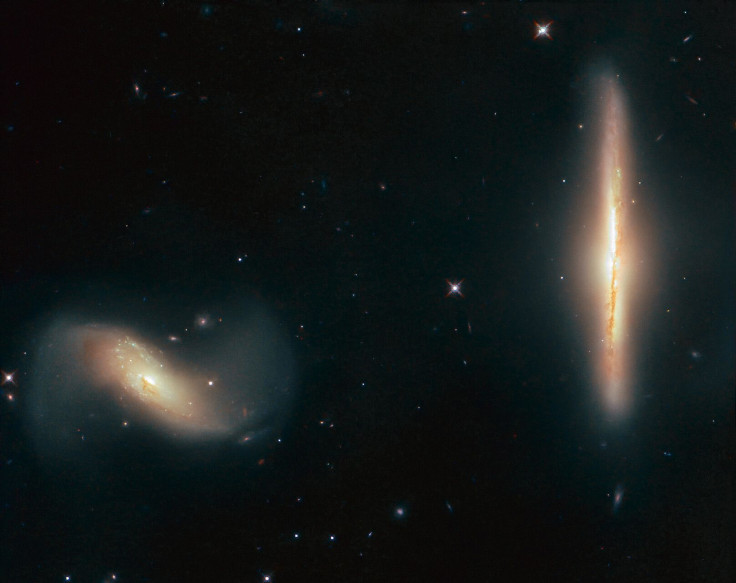Hubble Detects Friendly Galactic Duo In 'The Dragon' Constellation

Many galaxies live on their own, not interacting with other galaxies. However, there are galaxies that closely interact with their neighbors. An example would be NGC 6285 and NGC 6286, the two galaxies that form the duo called Arp 293.
Arp 293
Based on Earth-based observations, the mutual gravitation between NGC 6285 and NGC 6286 appears to be pulling wisps of dust and gas from each other, distorting their shapes and smudging their appearances in the sky.
In the incredible image from the NASA/ESA Hubble Space Telescope, one can see the two galaxies closely interacting with each other, and a faint “bridge” may even be seen between the galaxies.
The distance between NGC 6285 and NGC 6286 is approximately 130,500 light-years. By comparison, the distance between the Milky Way and our closest galactic neighbor, the Canis Major Dwarf Galaxy, is 42,000 light years from the galactic center. Meanwhile, the closest spiral galaxy to us, Andromeda Galaxy, is 2 million light-years away but is fast approaching the Milky Way at speeds of 110 kilometers per second. Experts estimate that Andromeda and Milky Way will merge to form a super galaxy in about 4 billion years.
Evidently, Hubble has captured other incredible images of galaxies interacting with each other.
“Some galaxies are closer friends than others,” NASA said. “These can have distinctive, beautiful, and downright odd shapes, ranging from sheet music to a spaceship entering a sci-fi-esque wormhole, a bouquet of celestial blooms and a penguin fiercely guarding its precious egg.”
Draco
Arp 293 is located in the constellation Draco, also known as “the Dragon,” about 250 million light-years away from Earth. It is considered a large constellation and, in fact, it is the sixth largest constellation in the sky. However, it is not a particularly prominent one because it only has a few objects of interest and bright deep sky objects apart from NGC 6543.
The name “Draco” is Latin for “dragon,” pertaining to the dragon that Greek mythology's Hera hired to guard a tree that grew golden apples. The hero, Hercules, then had to kill the dragon and steal the apples.
Incidentally, constellations Draco and Hercules appear beside each other in the sky, typically with Hercules’ foot on the dragon's head.
© Copyright IBTimes 2025. All rights reserved.






















